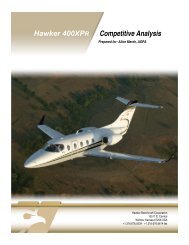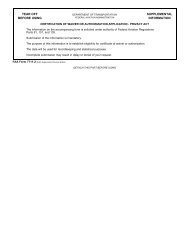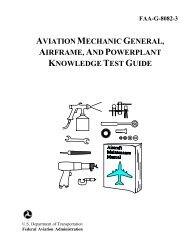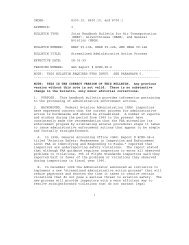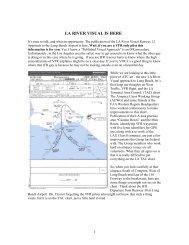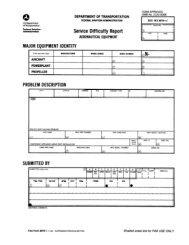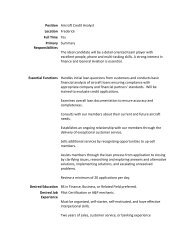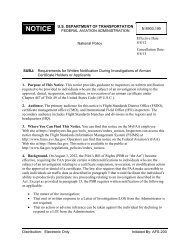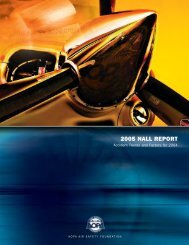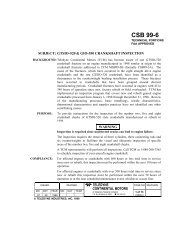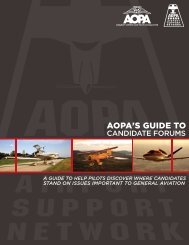2008 Nall Report - Aircraft Owners and Pilots Association
2008 Nall Report - Aircraft Owners and Pilots Association
2008 Nall Report - Aircraft Owners and Pilots Association
You also want an ePaper? Increase the reach of your titles
YUMPU automatically turns print PDFs into web optimized ePapers that Google loves.
<strong>2008</strong> NALL REPORT<br />
In this nineteenth edition of the <strong>Nall</strong> <strong>Report</strong> we have continued to<br />
exp<strong>and</strong> or streamline the data to provide more useful information for<br />
the general aviation pilot. ASF is also having increased media contact,<br />
unfortunately, often brought on by high profile accidents. We<br />
invariably will cite the <strong>Nall</strong> <strong>Report</strong> <strong>and</strong> direct reporters to it for more<br />
background information.<br />
That puts a premium on our getting the information correct <strong>and</strong> providing<br />
an interpretation that will withst<strong>and</strong> scrutiny. Perspective is<br />
critical as we address tragedy. Bad accidents that occur rarely deserve<br />
a different response than bad accidents that occur frequently.<br />
Bruce L<strong>and</strong>sberg<br />
President<br />
AOPA Air Safety Foundation<br />
Technology can help, as we’ve seen with greatly reduced fuel exhaustion<br />
accidents. On new technology aircraft where a microprocessor<br />
serves the role of a technically competent <strong>and</strong> persistent nagging<br />
passenger, pilots are recognizing that lack of fuel on board is nonnegotiable<br />
<strong>and</strong> l<strong>and</strong>ing while it is still optional. In 2007 there were 90<br />
fuel mismanagement accidents compared to 120 in 2002.<br />
Other areas yield less easily, such as l<strong>and</strong>ing. New aircraft designs<br />
or inexpensive simulation have not yet yielded a scenario where just<br />
anyone is able to l<strong>and</strong> in routinely expected conditions. So for now,<br />
the prescription remains as it always has – periodic practice under<br />
the eye of a competent instructor.<br />
The total number of accidents is up this year – not so good but fatal<br />
accidents are down <strong>and</strong> as best we can determine, by a greater amount<br />
than any decline in flight hours. That brings the fatal accident rate to<br />
a six-year low with only 1999 being lower. The elusive denominator,<br />
flight exposure, is being addressed far better than it has in the past under<br />
FAA’s greatly improved General Aviation Activity Survey.<br />
ASF continues to exp<strong>and</strong> pilot education outreach through live<br />
seminars <strong>and</strong> our increasingly popular free online course offerings at<br />
www.asf.org. The <strong>Nall</strong> <strong>Report</strong> remains our primary source to determine<br />
what topics should be developed.<br />
A major gift from the Estate of Manny Maciel has helped to ensure<br />
the availability of funding for this critical resource. FAA <strong>and</strong> NTSB<br />
staff deserve much appreciation in providing the massive amounts of<br />
data that are the report’s raw material. Finally, my thanks to all the<br />
ASF pilot donors who make our general aviation safety effort possible.<br />
Safe Flights,<br />
23



